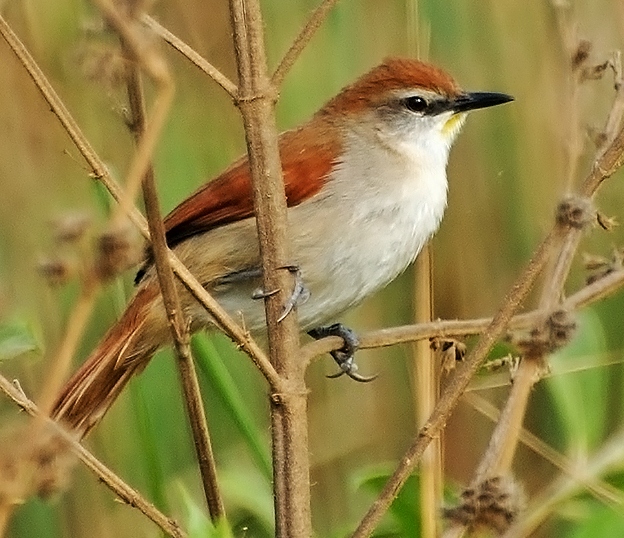 |
| Photo by Celi Aurora (Flickr) |
Common name:
yellow-chinned spinetail (en); curutié (pt); synallaxe à gorge jaune (fr); curutié colorado (es); gelbkinn-riedschlüpfer (de)
Taxonomy:
Order Passeriformes
Family Furnariidae
Range:
This South American species is found from northern Colombia and Venezuela, through Brazil and into Bolivia, Paraguay, Uruguay and northern Argentina.
Size:
These birds are 13-16 cm long and weigh 13-17 g.
Habitat:
The yellow-chinned spinetail is found in humid areas such as marshes, mangrove borders and grassy or scrubby wetlands with plenty of emergent or floating vegetation. They occur from sea level up to an altitude of 1.000 m.
Diet:
They feed on various invertebrates, such as spiders, adult and larval insects, earthworms and snails.
Breeding:
The breeding season of the yellow-chinned spinetail varies according to its range. The nest is a bulky spherical structure made of sticks and twigs, placed in a fork in a tree up to 9 m above the ground, usually near running water. There the female lays 2-5 greenish-white eggs, which are incubated by both parents for 14-15 days. The chicks are fed by both parents and fledge 13-18 days after hatching, but remain with their parents for a few more weeks.
Conservation:
IUCN status – LC (Least Concern)
This species has a very large breeding range and is described as common. This population is suspected to be in decline owing to ongoing habitat loss and degradation







